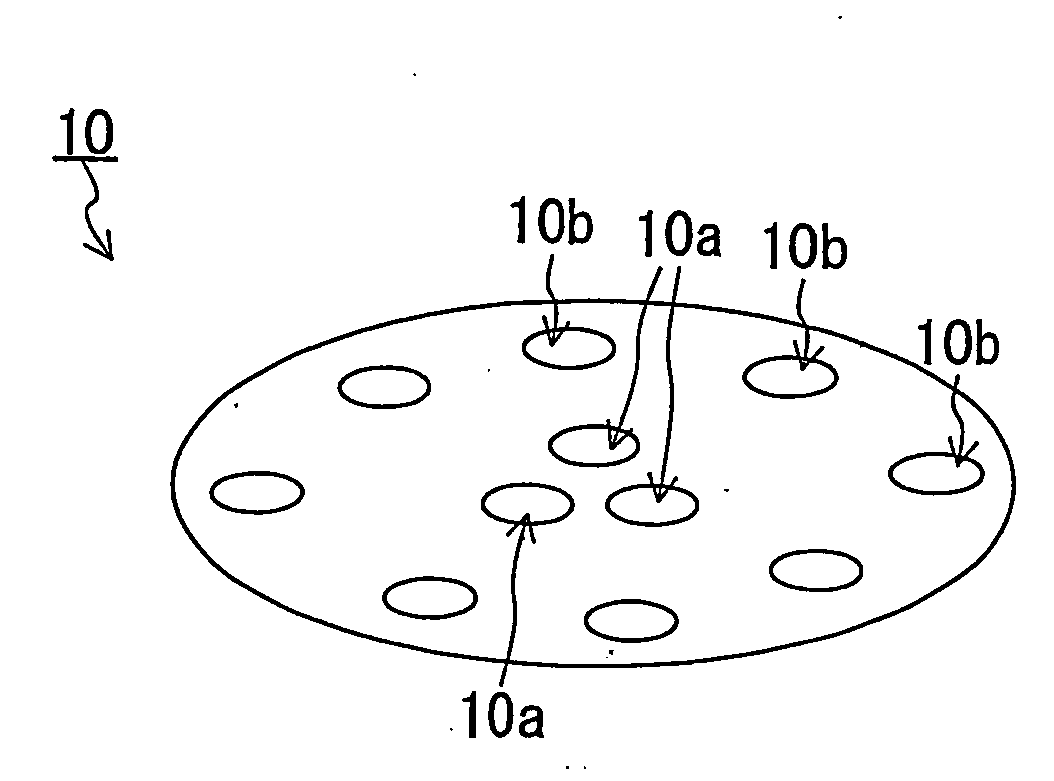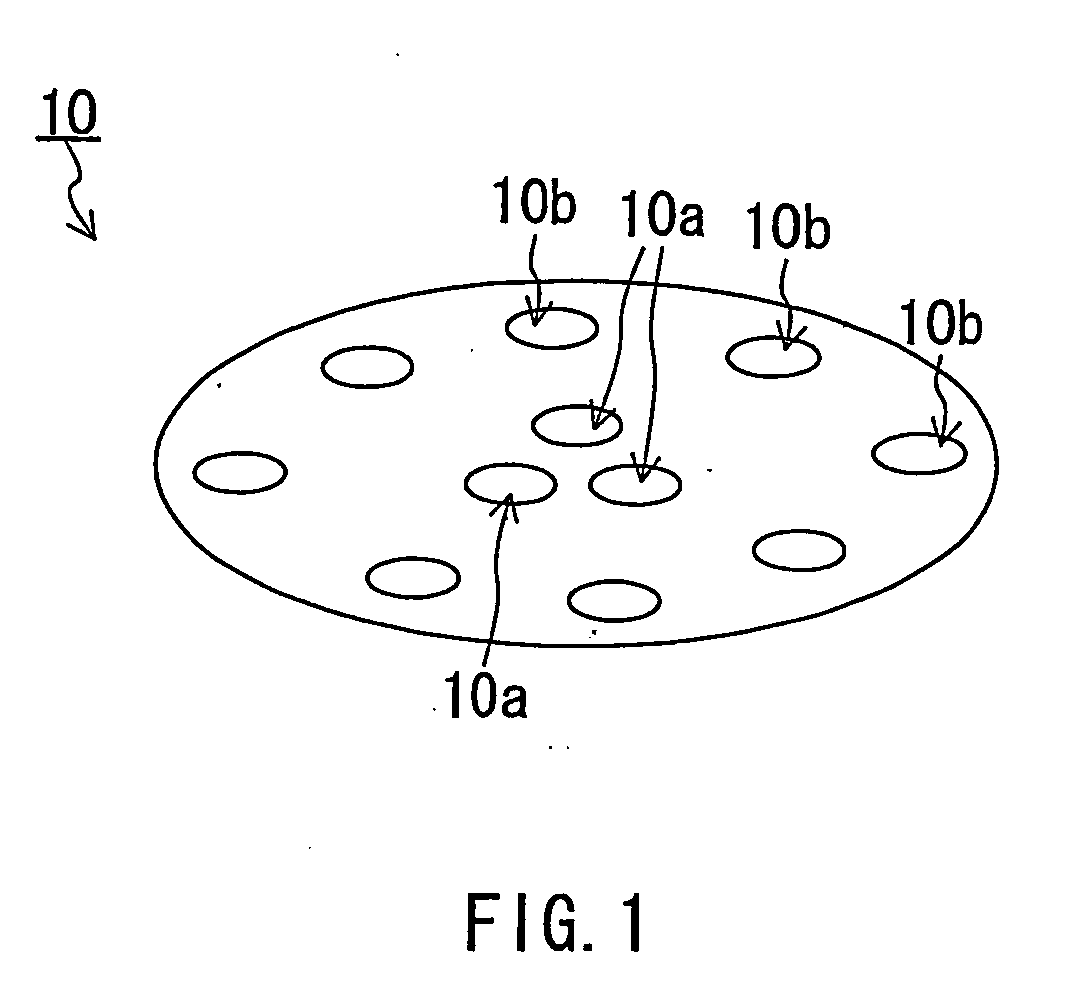Cord for Rubber Reinforcement
a technology of rubber reinforcement and cord, which is applied in the direction of textile cables, yarn, textiles and paper, etc., can solve the problems of destroying the cord, cracking the adhesive layer between the primary twist thread and the adhesive layer, and the conventional cord for rubber reinforcement with the limited number of twists and limited twist directions not having sufficient bending fatigue resistance, etc., to achieve the effect of improving bending fatigue resistance and lowering dimensional stability
- Summary
- Abstract
- Description
- Claims
- Application Information
AI Technical Summary
Benefits of technology
Problems solved by technology
Method used
Image
Examples
example 1
[0049]Three glass fibers (each being a bundle of 200 filaments having an average diameter of 9 μm, E-glass composition) were aligned with one another. After applying an aqueous treatment liquid shown in Table 1, the glass fibers were dried for one minute in a drying furnace that had been set to 150° C. As a result, a glass fiber strand (1) with a coating layer was obtained for Example 1. Note that the “solid content” in Table 1 means the amount of component other than the solvent or dispersion medium.
TABLE 1ComponentsContent (solid content)H-NBR (solid content 40 mass %)(*1)100 parts by massRF 10 parts by mass(*1)ZETPOL LATEX, manufactured by JAPAN ZEON CORPORATIONRF: resorcinol-formaldehyde condensation product (resorcinol-formalin condensation product)
[0050]The glass fiber strands (1) were primarily twisted at a rate of 0.4 times / 25 mm in Z direction to obtain a strand (A). Separately, the glass fiber strands (1) were primarily twisted at a rate of 3.0 times / 25 mm in S direction t...
example 2
Comparative Examples 1 to 5
[0052]Cords for rubber reinforcement (Example 2, Comparative Examples 1 to 5) were prepared as in Example 1 except for varying the number of primary twists, the number of final twists, and the direction of twist of the strands. The configurations of the respective cords are given in Table 3 below.
example 3
Comparative Example 6
[0053]Glass fiber strands (1) were prepared as in Example 1. The glass fiber strands (1) were primarily twisted at a rate of 1.0 time / 25 mm in Z direction to obtain a strand (A). Separately, the glass fiber strands (1) were primarily twisted at a rate of 2.0 times / 25 mm in S direction or Z direction to obtain a strand (B).
[0054]In this manner, three strands (A), four strands (B) with the primary twist in S direction, and four strands (B) with the primary twist in Z direction were prepared.
[0055]These eleven strands were laced through the apertures of a guide similar to the guide 10 shown in FIG. 1. The four strands (B) with the primary twist in Z direction, and the four strands (B) with the primary twist in S direction were alternately laced through eight apertures 10b. All strands were finally twisted at a rate of 2.0 times / 25 mm in S direction. In this manner, a cord for rubber reinforcement of Example 3 was obtained.
[0056]A reinforcing cord of Comparative Exa...
PUM
| Property | Measurement | Unit |
|---|---|---|
| diameter | aaaaa | aaaaa |
| width | aaaaa | aaaaa |
| length | aaaaa | aaaaa |
Abstract
Description
Claims
Application Information
 Login to View More
Login to View More - R&D
- Intellectual Property
- Life Sciences
- Materials
- Tech Scout
- Unparalleled Data Quality
- Higher Quality Content
- 60% Fewer Hallucinations
Browse by: Latest US Patents, China's latest patents, Technical Efficacy Thesaurus, Application Domain, Technology Topic, Popular Technical Reports.
© 2025 PatSnap. All rights reserved.Legal|Privacy policy|Modern Slavery Act Transparency Statement|Sitemap|About US| Contact US: help@patsnap.com


